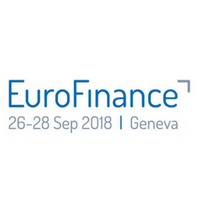Reminder Event: TOMORROW’S EUROPE: Uncertainty and unprecedented opportunity
| 10-09-2018 | Reuters | treasuryXL |

Join this dynamic discussion where a panel of economic, geopolitical and business experts will explore what ‘Tomorrow’s Europe’ may look like.
Europe is at a crossroads. It faces many challenges – from globalisation and geopolitics, to the impact of new technologies and trade agreements. But change also brings great opportunities for the brave and adaptable. Above all, innovation, entrepreneurship and investment will be the foundations of future prosperity. And businesses – as the main creators of jobs and growth – have a pivotal role in determining what ‘Tomorrow’s Europe’ will become.
Our expert panel will discuss
- What will drive economic growth?
- What are the geopolitical factors that lie ahead?
- Which businesses and markets will bring investment to the region?
- What will propel innovation and competition?
- How new regulations and a post-Brexit trade landscape will shape the decades to come
All this, and much more, up for debate at the Axica, Berlin on 19 September 2018.
Agenda
6:30 pm: Arrive and sign in
7:00 pm: Welcome and introductions
7:10 pm: Panel discussion
8:00 pm: Audience Q&A
8:30 pm: Networking drinks reception
Meet the Speakers
(Additional panellists to be announced shortly)
Özlem Bedre-Defolie
Associate Professor of Economics, ESMT
Özlem Bedre-Defolie is an associate professor (with tenure) of economics at ESMT Berlin. Her research has been published in leading Economics, Marketing and Industrial Organization journals, including American Economic Review, Journal of Economic Theory, American Economic Journal: Microeconomics, Marketing Science, International Journal of Industrial Organization.
Ferdinand Fichtner
Head of Department, DIW Berlin
Dr. Ferdinand Fichtner is Head of the Forecasting and Economic Policy Department at DIW Berlin. He holds a Ph.D. from the University of Cologne and wrote his dissertation thesis about the effects of monetary integration on economic welfare. He is one of the leading German experts on macroeconomic policy, with frequent appearances on national and international media and close connections with German and European policy makers.
Josef Janning
Head of European Council on Foreign Relations, Berlin Office
Josef Janning joined the European Council on Foreign Relations in April 2014 as Senior Policy Fellow in the Berlin Office. Josef has published widely on European Affairs, International Relations, EU foreign and security policy, German foreign and European policy as well as global affairs. On these issues he also is a frequent commentator with German and international media.
Panel Moderator: Vanessa Cuddeford
Vanessa Cuddeford is a journalist and presenter with 15 years’ experience. She anchors and reports for the BBC and Reuters, regularly presenting news, arts and business programmes for international broadcasters.
This event is for:
Business leaders / senior executives / entrepreneurs
For more information or if you want to register for the event visit the events website.
[button url=”https://www.treasuryxl.com/contact/” text=”Contact us” size=”small” type=”primary” icon=”” external=”1″]
[separator type=”” size=”” icon=””]





 Treasury’s strategic role continues to expand as it takes on more responsibilities, collaborates with an increasing array of business units, advises senior management and becomes heavily involved in making capital allocation decisions.
Treasury’s strategic role continues to expand as it takes on more responsibilities, collaborates with an increasing array of business units, advises senior management and becomes heavily involved in making capital allocation decisions.

 De treasurer en de controller zouden twee handen op dezelfde buik moeten zijn, maar de vraag is of dat in alle, of zelfs de meeste, gevallen wel zo is. Enkele uitzonderingen daargelaten, zijn de verschillen groter dan de overeenkomsten.
De treasurer en de controller zouden twee handen op dezelfde buik moeten zijn, maar de vraag is of dat in alle, of zelfs de meeste, gevallen wel zo is. Enkele uitzonderingen daargelaten, zijn de verschillen groter dan de overeenkomsten.